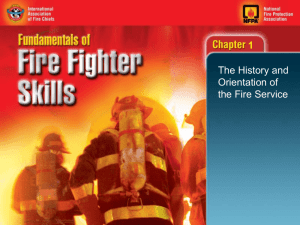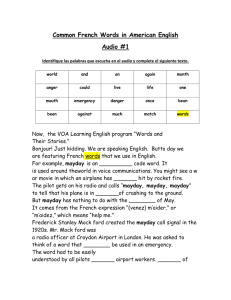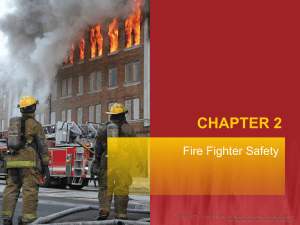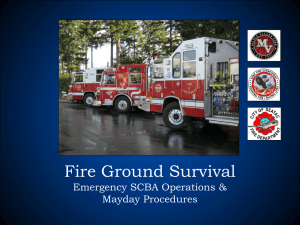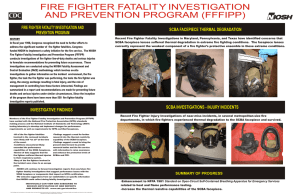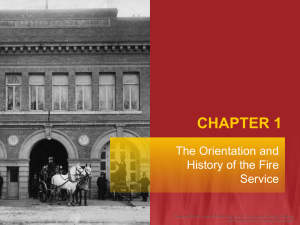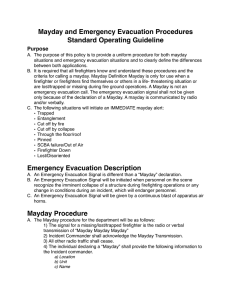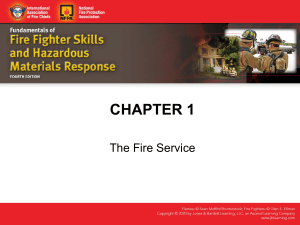Fire Fighter Survival - Fundamentals of Fire Fighter Skills, Third Edition
advertisement
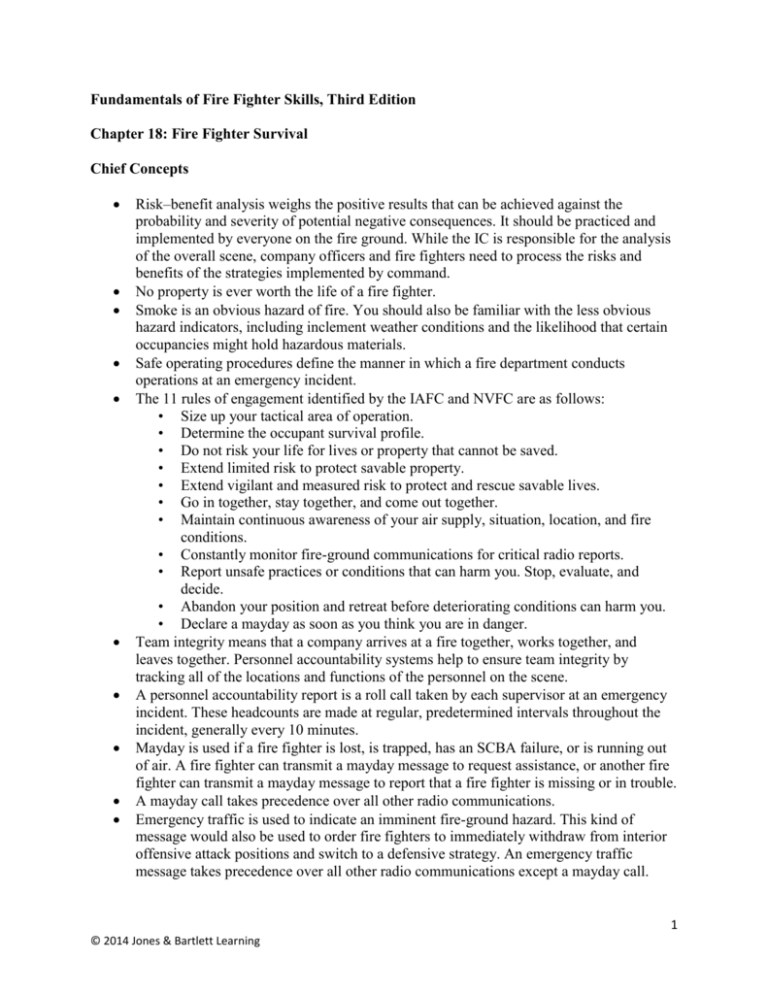
Fundamentals of Fire Fighter Skills, Third Edition Chapter 18: Fire Fighter Survival Chief Concepts Risk–benefit analysis weighs the positive results that can be achieved against the probability and severity of potential negative consequences. It should be practiced and implemented by everyone on the fire ground. While the IC is responsible for the analysis of the overall scene, company officers and fire fighters need to process the risks and benefits of the strategies implemented by command. No property is ever worth the life of a fire fighter. Smoke is an obvious hazard of fire. You should also be familiar with the less obvious hazard indicators, including inclement weather conditions and the likelihood that certain occupancies might hold hazardous materials. Safe operating procedures define the manner in which a fire department conducts operations at an emergency incident. The 11 rules of engagement identified by the IAFC and NVFC are as follows: • Size up your tactical area of operation. • Determine the occupant survival profile. • Do not risk your life for lives or property that cannot be saved. • Extend limited risk to protect savable property. • Extend vigilant and measured risk to protect and rescue savable lives. • Go in together, stay together, and come out together. • Maintain continuous awareness of your air supply, situation, location, and fire conditions. • Constantly monitor fire-ground communications for critical radio reports. • Report unsafe practices or conditions that can harm you. Stop, evaluate, and decide. • Abandon your position and retreat before deteriorating conditions can harm you. • Declare a mayday as soon as you think you are in danger. Team integrity means that a company arrives at a fire together, works together, and leaves together. Personnel accountability systems help to ensure team integrity by tracking all of the locations and functions of the personnel on the scene. A personnel accountability report is a roll call taken by each supervisor at an emergency incident. These headcounts are made at regular, predetermined intervals throughout the incident, generally every 10 minutes. Mayday is used if a fire fighter is lost, is trapped, has an SCBA failure, or is running out of air. A fire fighter can transmit a mayday message to request assistance, or another fire fighter can transmit a mayday message to report that a fire fighter is missing or in trouble. A mayday call takes precedence over all other radio communications. Emergency traffic is used to indicate an imminent fire-ground hazard. This kind of message would also be used to order fire fighters to immediately withdraw from interior offensive attack positions and switch to a defensive strategy. An emergency traffic message takes precedence over all other radio communications except a mayday call. 1 © 2014 Jones & Bartlett Learning The sole purpose of RICs is to rescue fire fighters operating at emergency incidents. An RIC is an extension of the two-in/two-out rule. This team should be in place at any incident where fire fighters are operating in conditions that are immediately dangerous to life and health and should be deployed to any situation where a fire fighter needs immediate assistance. One of the most basic methods to remain oriented in a dark, smoke-filled environment is to always stay in contact with a hose line or guideline. The first step in attempting a self-rescue is to initiate a mayday. A safe location is a temporary location that provides refuge while awaiting rescue or finding a method of self-rescue. In this case, “safe” means less hazardous. Always follow the rule of air management: Know how much air you have left in your SCBA before you enter a building, and manage that amount so that you leave the hazardous environment before your low-air alarm sounds. SCBA straps or a drag rescue harness may be used to help drag a downed fire fighter to a safe location. Critical incident stress is a known hazard that emergency personnel can learn to handle. This hazard can affect fire fighters’ emotional and mental health. Numerous resources are available to help fire fighters maintain good emotional and mental health. 2 © 2014 Jones & Bartlett Learning


